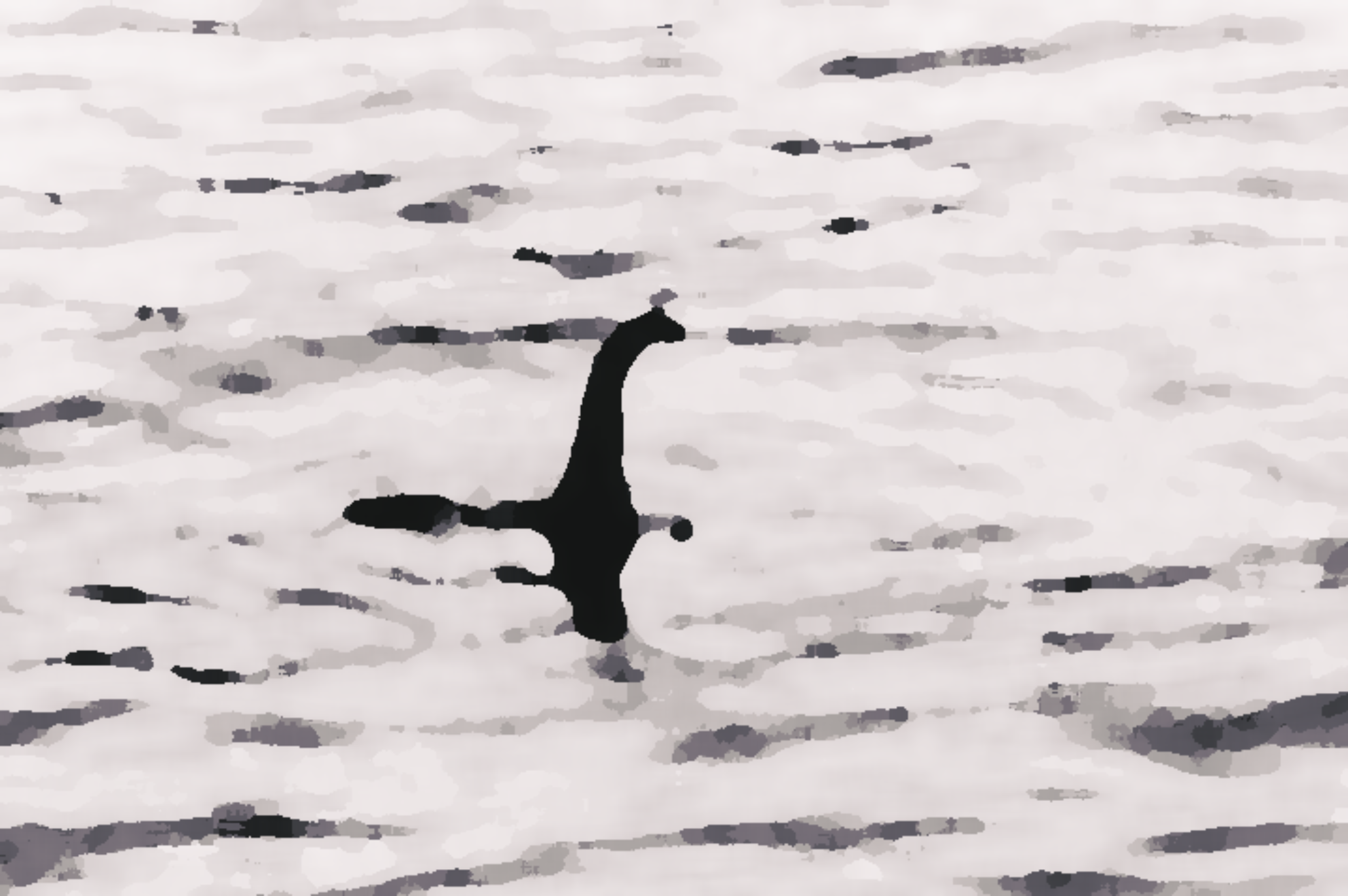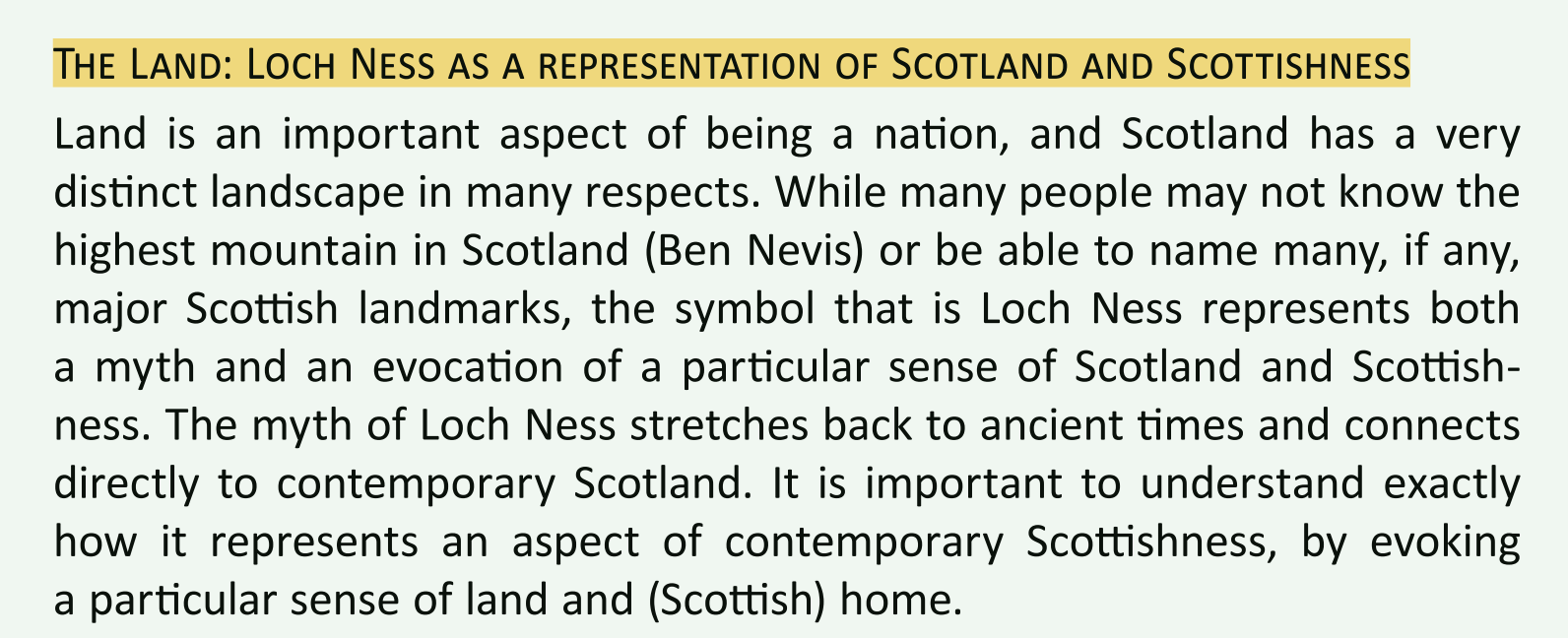WEEK3 SICP: MYTH, SYMBOL, AND THE SCOTTISH IMAGINATION

After reading Murray Leith and Joanna Aleksandra Radowicz’s article The Importance of Old and New Symbolism in Modern Scottish National Identity, I found myself diving deeper into the rich world of Scottish myths, symbols, and their influence on contemporary art. The paper considers the use of myths and symbols, and the culture and values that underpin contemporary Scottish Identity. The article not only gave me fascinating insights into these iconic stories but also sparked some great ideas for my upcoming exhibition about Scottish myths and art.
What attracted me?
First, the Loch Ness Monster. It’s more than just a fun story about a mysterious creature lurking in the waters of Loch Ness. The article highlighted how Nessie symbolizes Scotland’s wild, untamed beauty and has become a globally recognized icon, thanks to media and cultural storytelling. It’s an intriguing mix of mystery and national pride.
Second, the authors’ use of ethnosymbolism—a theory about how historical symbols and myths shape modern national identity—gave me a useful lens to think about how these symbols are reimagined in today’s art.
How this inspired my exhibition project?
The legend of the Loch Ness Monster sparked my interest in exploring more Scottish mythology and made me realise that it seemed like it could be an important part of an exhibition I was curating on the theme of Scottish mythology.
I love the idea of making the exhibition interactive and personal. A “Myth Memory Wall” could let visitors share their own stories about Scottish myths—whether it’s a Nessie sighting or a childhood tale about the fairies of the Highlands. These contributions would make the exhibition feel alive and connected to the community.
Using the ethnosymbolism framework, I also want to explore how ancient Scottish symbols have evolved over time, showing their relevance in today’s culture through modern art.
References
Leith, Murray, and Jonathan A. Radowicz. The Importance of Old and New Symbolism in Modern Scottish National Identity. Culture, Values, Identity, December 21, 2022. https://journals.akademicka.pl/relacje/issue/view/297.
WEEK3 SICP: MYTH, SYMBOL, AND THE SCOTTISH IMAGINATION / Tianyi Chen / Curating (2024-2025)[SEM2] by is licensed under a
1 replies to “WEEK3 SICP: MYTH, SYMBOL, AND THE SCOTTISH IMAGINATION”
Leave a reply
WEEK3 SICP: MYTH, SYMBOL, AND THE SCOTTISH IMAGINATION / Tianyi Chen / Curating (2024-2025)[SEM2] by is licensed under a





Your first three blog posts focus on your personal history and past curatorial experience, a case study you identify with and some preliminary research. These are presented in an effective manner, assisted by illustrations which offer further visual description, well done. There is some reflection upon the learnings gained from this experience and a synthesis of references, like the exhibition ‘Out of Sight, Out of Mind,’ but it is important to consider how these may now bear upon the theory and practical design of your Speculative Independent Curatorial Project.
Your research on Scottish myths and ‘ethnosymbolism’ could make for a promising critical enquiry but it is important to bring any concept into conversation with contemporary artistic practices and consider how they also inform and shape the direction of the project. Begin to investigate smaller scale projects which have tackled similar themes: how do they take large and unwieldy topics and produce something specific, localised and impactful?
Beyond these examples, it’s important that you begin to incorporate expressly curatorial concepts within your thinking: what models, formats and theories do you find interesting and in what ways will they inform your speculative project? Remember that this is pitched at an emerging curator stage, so you will want to begin considering the practicalities of developing this at a modest scale. Where could it be held? Which artists might it involve? When these answers become clearer you should adjust your project accordingly.